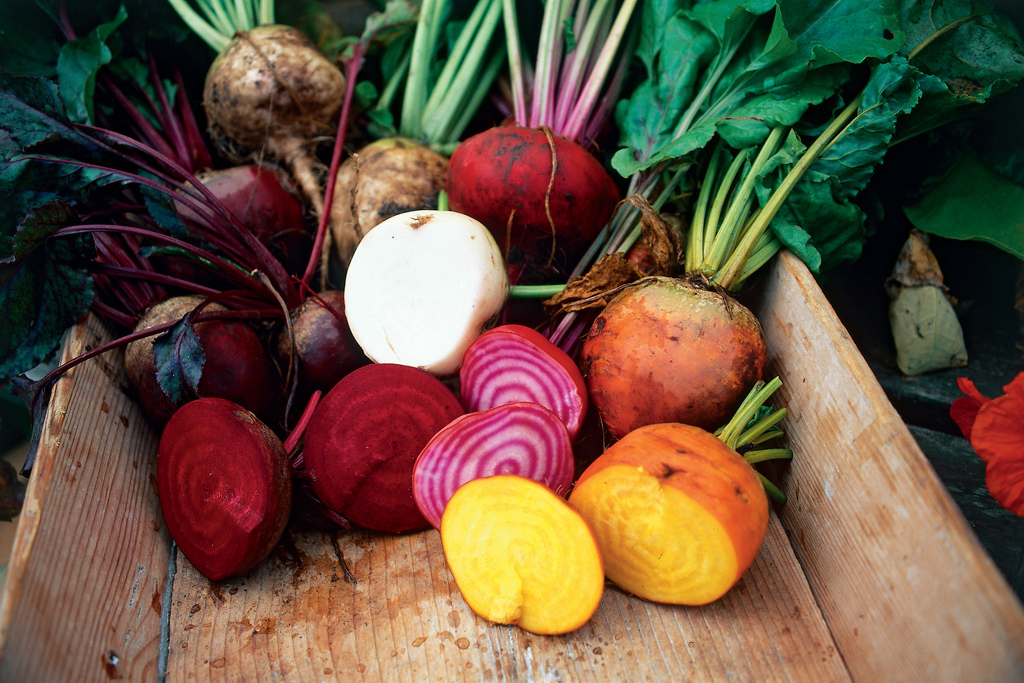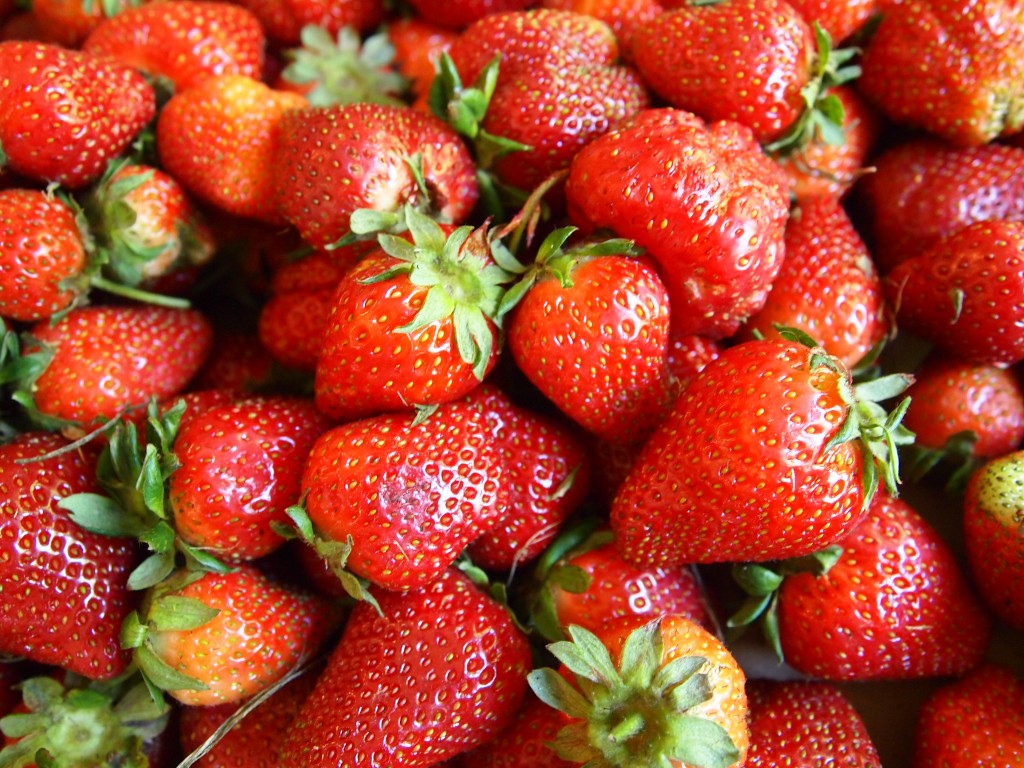
Food for a Happy Gut and Healthy Heart
Photo Credit: Skanska Matupplevelser, via Flickr Creative Commons
Fiber, the non-digestible material in a plant, is great for both your gut and heart health. Study after study has shown that it reduces the risk of heart disease , diabetes, obesity, metabolic syndrome, colon and breast cancer, and digestive diseases such as inflammatory bowel disease and diverticulosis.
Eating more dietary fiber decreases inflammation, especially in those with diabetes.
Research also shows that eating more dietary fiber decreases inflammation, especially in those with diabetes. It also has positive prebiotic effects on our gut flora, which impacts our immune system and overall health. (See our Ornish Living article, The Gut and Heart Health Connection)
Dietary fiber is naturally present in plant foods such as whole grains, fruits, vegetables, beans, lentils, split peas, nuts and seeds. Even though it’s classified as a carbohydrate, the sugar molecules in fiber cannot be broken down. So unlike most carbohydrates, it passes through the digestive tract undigested, acting as a broom or a sponge, depending on the type of fiber. It either clears or soaks up waste and leaves undigested fermentable fiber, which is filled with nutrients and fuels healthy gut bacteria.
Two Important Types of Fiber
There are two types of dietary fiber: soluble and insoluble. If a fiber is soluble, it means it can dissolve in water. When soluble fiber dissolves, it attracts water to form gel, which acts like a sponge in the gut. This slows down digestion and aids in the absorption of nutrients. Insoluble fiber, on the other hand, does not dissolve in liquid. It acts like a brisk broom sweeping material through the digestive tract and promoting bowel health and regularity. It is important to include both types of fiber in your diet since each type has unique health benefits.
Soluble Fiber
Fibers with a high water-holding capacity, such as pectin, gums, beta-glucans, mucilages, and psyllium are categorized as soluble fiber. They include oats, legumes, barley, certain fruits, and some seeds and nuts for those not on the Ornish Lifestyle Medicine, which does not include seeds and nuts (see below for a complete list of soluble fiber foods). Soluble fibers absorb water in the intestine to form a gel-like consistency, which slows down digestion and delays the emptying of the stomach.
The Benefits of Soluble Fiber
Promotes Weight Management
Research shows that those who include fiber in their diet have more success with weight loss than those who don’t. A 2015 study published in the Annals of Internal Medicine showed that those who included at least 30 grams of fiber lost about twice as much weight than those who consumed less. There are several ways that fiber influences weight management. It adds bulk and volume, viscosity, water-holding capacity, adsorption and binding, and fermentability, which all affect the rate of digestion and absorption of nutrients. It also promotes a prebiotic effects and signals the release of gut hormones, such as ghrelin, which affect our ability to feel satisfied and full after a meal. Soluble fiber also promotes blood sugar management by slowing down digestion, which causes a gentle release of blood sugars and lowers postprandial blood sugars. It also has beneficial effects on insulin sensitivity.
Lowers LDL Cholesterol
Soluble fiber lowers LDL cholesterol levels by binding with bile acids in the intestines. This process interferes with the absorption of cholesterol and sends a signal to the liver to slow down its cholesterol production.
Promotes Healthy Gut Bacteria
Soluble fiber is rich in a type of prebiotics called fructo-oligosaccharides, which includes inulin and oligofructose. Stomach acid and digestive enzymes don’t break down these compounds. Instead, they are fermented and used used as fuel for healthy bacteria such as lactobacillillus and bifidobacter. Emerging research with animals has shown promise in how soluble fibers impact the gut microbes to decrease inflammation and support the immune system.
Soluble Fiber Sources
All plants contain a combination of soluble and insoluble fibers, but some have a higher concentration of soluble fiber.
Oats: Research supports the recommendation of ≥ 3 grams of beta-glucan from oats for lowering LDL cholesterol up to 5-10%.
Legumes such as peas, beans and lentils
Barley
Fruits rich in pectin such as berries, peaches, apples, plums, prunes, pears and figs
Certain vegetables such as broccoli, carrots, Jerusalem artichokes
Root vegetables such as sweet potatoes, potatoes, yams, and onions
Psyllium: Research shows the benefits of psyllium on cholesterol reduction as indicated in this clinical trial with Brazilian children and adolescents with hyperlipidemia.
Flaxseeds: Research suggests the regular consumption of flax on cholesterol reduction
Nuts: almonds are the highest in fiber
Insoluble Fiber
Insoluble fiber, such as cellulose, hemicellulose, and lignins, is often referred to as roughage. It does not dissolve in water, so it passes through your digestive system relatively intact.
The Benefits of Insoluble Fiber
- Promotes healthy digestive system by promoting regularity, the elimination of wastes, and preventing constipation
- Supports weight management by providing bulk, which promotes the feeling of fullness
- Promotes blood pressure and blood sugar management
- Research also shows the positive health impact of insoluble fibers such as cellulose on our gut microbes
Insoluble Fiber-Rich Sources
- Whole grains such as wheat and quinoa
- Legumes (peas, beans and lentils)
- Vegetables such as leafy greens, green beans, brussels sprouts, cauliflower, carrots, cucumbers and zucchini
- Root vegetable skins such as potato skins and winter squash
- Some fruit and skins of fruit such as apples, kiwis and grapes
5 Tips for Consuming More Fiber
The National Academy of Sciences Institute of Medicine recommends that adults consume 21–35 g of dietary fiber per day (30 to 38 grams per day for men and 21 to 25 grams for women). Currently, the average American eats only 12–18 g daily, which falls short of the proper amount to prevent disease and promote health.
- Choose a whole food, plant-based approach such as Ornish Lifestyle Medicine, which includes an abundant amount of health-promoting dietary fiber. Check the fiber content of many common foods to support your daily recommended intake of dietary fiber.
- Choose whole grains.
- Avoid processed and refined carbohydrate foods.
- Read labels. Choose foods high in fiber with 20% or more of Daily Value (DV) when buying packaged items. A high fiber food has 5 grams or more of total dietary fiber and has at least 2.5 grams to be considered as a good source of fiber.
- Strive for five or more servings of produce. (See our Ornish Living article, Shoot for Seven.)
How are you going to add health promoting fiber to your daily fiber today?







